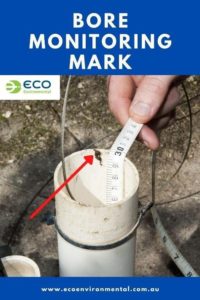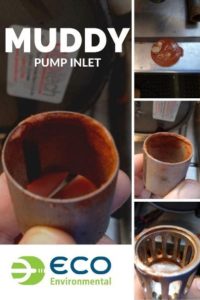Support Articles
Casella 633 Sound Level Meter Noise Sampling Instructions
The Casella CEL-633 is a very versatile sound level meter. The video below takes you through how to start taking a noise sample.
How to Assemble the HydraSleeve SuperSleeve
The Hydrasleeve Supersleeve is set up slightly differently from the standard Hydrasleeve in that it has a top collar attached to the top. The video below shows how to set one up using the top weight. A top collar is smaller than the weight but the methodologies are the same.
Conductivity Plus Calibration
The Heron Instruments Conductivity Plus is a great way to measure EC profiles down your bores. Like any water quality meter it needs to be calibrated regularly. The video below takes you through how to calibrate the Heron Conductivity Plus.
Water Level Logger Data Download
Following the retrieval of your water level logger from the field, it is necessary to retrieve the data for analysis. The video below shows how to download the data from a Heron Instruments DipperLog water level logger.
Water Level Logger Setup
Here at ECO Environmental, we provide the Heron Instruments DipperLog water level logger for long term water level monitoring. The video below shows how to set up the DipperLog prior to deploying in the field.
How does an Interface Probe work?
The Heron Instruments interface probe looks very similar to a regular dip meter. However, as well as measuring depth to water it can also measure depth to oil. Both probes work very differently, and the video below highlights these differences and tips on use.
Water Quality Meter Calibration
Best practice dictates that you calibrate your water quality meter before every day of sampling. The meters usually have a straightforward system embedded in them. The video below shows the calibration of the YSI ProPlus meter and is a useful guide for general calibration procedure.
Low Flow Bladder Pump set up
To a new user the low flow bladder pumps can seem a bit overwhelming. But the equipment is actually pretty simple to set up. The video below gives an overview of the set up and some tips to help get you started. If you need further assistance please give your local friendly ECO office a call.
How to use the Dipper See-Examiner down hole camera - Part 2
Heron has produced a very affordable and easy to use downhole camera. The video below gives an example of the camera output.
How to use the Dipper See-Examiner down hole camera - Part 1
Heron have produced a very affordable and easy to use downhole camera. The video below gives a quick overview of how to use the equipment.
Mark your standpipe

When dipping a bore to determine water level it is critical that the measurement is taken from the same place on the bore casing. This avoids inconsistencies in measurement associated with angled casing.
Simply place a visible mark with a permanent marker the first time you dip the bore. The picture below gives a good example.
Don’t drop your pump in the mud

When using a pump to extract groundwater it can be easy to forget the depth of the bore and drop the pump inlet into the fine sediment at the bottom of the bore. Doing this will coat the bore in mud and will likely clog the inlet forcing the pump to overheat.
Make sure you know the depth of the bore and take care in lowering your pump to the required depth.
How far to push the tubing onto your pump

A quick tip when connecting your tubing to using a stainless-steel pump is to not push the tubing fully onto the connector.
If you do it can be extremely difficult to remove the tubing from the pump and more often than not you will have to cut it off with a knife. Instead, push the tubing only halfway on, the connection will be just as good, and you won’t have the difficulty of removing the tubing after the sampling has been completed.
How do Hydrasleeves work?
The video below gives a good overview of how a hydrasleeve works. The sleeve is deployed flat and closed to the depth required. The water pressure in the check valve keeps the sleeve closed. The sleeve is left for a minimum of 24 hours to allow representative water from the aquifer to enter the well screen. The hydrasleeve is retrieved with a sharp pulling motion that opens the top of the hydrasleeve filling it up and closing the check valve. Retrieval of the sleeve can continue with no additional water entering. Once at the surface the sleeve is pierced with a straw to allow samples to be transferred to your containers.
What do you need for a Hydrasleeve?

When ordering a hydrasleeve for the first time there are several components that need to be considered.
The hydrasleeve in the picture is the HDPE super/skinny model which requires:
- Topcollar and clip (reusable)
- Hydrasleeve (single use)
- Weight clip (reusable)
- Weight (reusable)
Multiparameter Meter Calibration
A step-by-step guide to calibrating a YSI ProPlus Multiparameter Meter, also know as a water quality meter.
Low Flow Pump Set Up
Step-by-step guide through the set up of a low flow bladder sampling pump.
Introduction to the Interface Meter
A guide to the interface meter, how it works and how to use it.
Eco Support
At ECO we will always provide you with the best possible support and service. Whether you purchase a piece of equipment or have an item on hire, ECO will provide you with the support and service you need to get your job done on time and under budget.
ECO is open outside of standard retail trading hours.
For emergency situations an ECO staff member is available 24 hours a day, seven days a week.
Training & Information Sessions
Don't know how a piece of equipment works? Can't get it quite right? ECO also offer training and information sessions. Simply collect your equipment from our offices and we'll go through it with you, or if you would like a group training session at your office we'll come out to you.
Training sessions are by appointment only, so don't forget to book!
Custom Equipment
Can't find what you need? ECO work with a wide range of manufacturers and we are more than happy to look at your plans, proposed applications and help you design a solution. Whether you are after one item or one thousand, we have the contacts that will work with you to get the job done.
ECO also work direct with many manufacturers. If one of our products almost meets your requirements but not quite, discuss your plans with ECO and we will pass them direct to the manufacturer.

